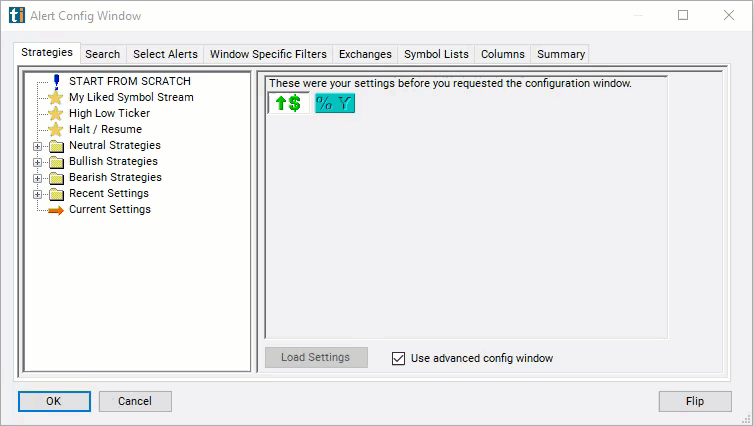Change Since January 1
Table of Contents
- Understanding the Change Since Janurary 1 Dollar Filter
- Change Since Jan 1 Dollar Filter Settings
- Using the Change Since Janurary 1 Dollar Filter
- FAQs
Understanding the Change Since Janurary 1 Dollar Filter
The "change since Janurary 1 ($)" filter compares the current price to the price on Janurary 1st, measured in dollars. Traders and investors may use this filter to identify stocks that have experienced significant price movements since the start of the year, which could indicate potential trends or opportunities for further analysis. It can also help them understand the performance of a stock within the current calendar year.
The formula for the $ version is simply the current price minus the old price. Bigger numbers mean that the price has moved up more. Negative numbers mean that the price has moved down. 0 means no change.
The current price is based on the last print. There is no smoothing or averaging. This updates before, during, and after market hours.

Change Since Jan 1 Dollar Filter Settings
The settings of each Trade Ideas filter are defined in the Window Specific Filters Tab located in the Configuration Window of your Alert/Top List Window.
Here is how to setup the filter in your configuration window:
- Set the min value to 5 to see stocks which are up at least $5 since the start of the calendar year.

Using the Change Since Janurary 1 Dollar Filter
Several trading strategies can be employed with the Change Since Janurary 1 Dollar filter. Here are a few examples:
Momentum Trading: Traders can use the change since January 1 ($) filter to identify stocks that have exhibited strong upward momentum since the beginning of the year. Stocks with significant positive changes in dollar terms indicate strong performance during the year. Traders may consider entering long positions in these stocks to ride the momentum.
Contrarian Trading: Conversely, traders can use the filter to identify stocks that have experienced significant negative changes in dollar terms since January 1st. These stocks may have fallen out of favor with investors but could potentially be undervalued. Contrarian traders may consider entering long positions in these stocks, expecting a potential reversal or bounce back.
Trend Following: Traders can use the change since January 1 ($) filter as part of a trend-following strategy. Stocks with consistent positive changes since the beginning of the year may indicate strong uptrends, while those with consistent negative changes may indicate downtrends. Traders may consider entering long positions in stocks with upward trends and short positions in stocks with downward trends.
FAQs
What does the "change since January 1 ($)" filter signify?
- This filter indicates the absolute dollar amount by which a stock's price has changed since the beginning of the calendar year. It provides insight into the magnitude of price movements within the current year.
How is the "change since January 1 ($)" calculated?
- The calculation involves subtracting the stock's price on January 1st from its current price. The resulting value represents the absolute dollar amount of the price change since the beginning of the year.
How should I interpret high or low values in the "change since January 1 ($)" filter?
- A high positive value indicates that the stock's price has risen significantly since the beginning of the year, while a high negative value suggests a substantial decline. Conversely, low values indicate minimal price movement within the current year.
Can the "change since January 1 ($)" filter be used as the sole basis for trading decisions?
- While the filter provides valuable information, it should be used alongside other technical and fundamental analysis tools. Relying solely on this filter may not provide a comprehensive view of market conditions.
Filter Info for Change Since January 1 [UpJan1D]
- description = Change Since January 1
- keywords = Single Print
- units = $
- format = p
- toplistable = 1
- parent_code =





 Change Since January 1 [UpJan1P]
Change Since January 1 [UpJan1P]